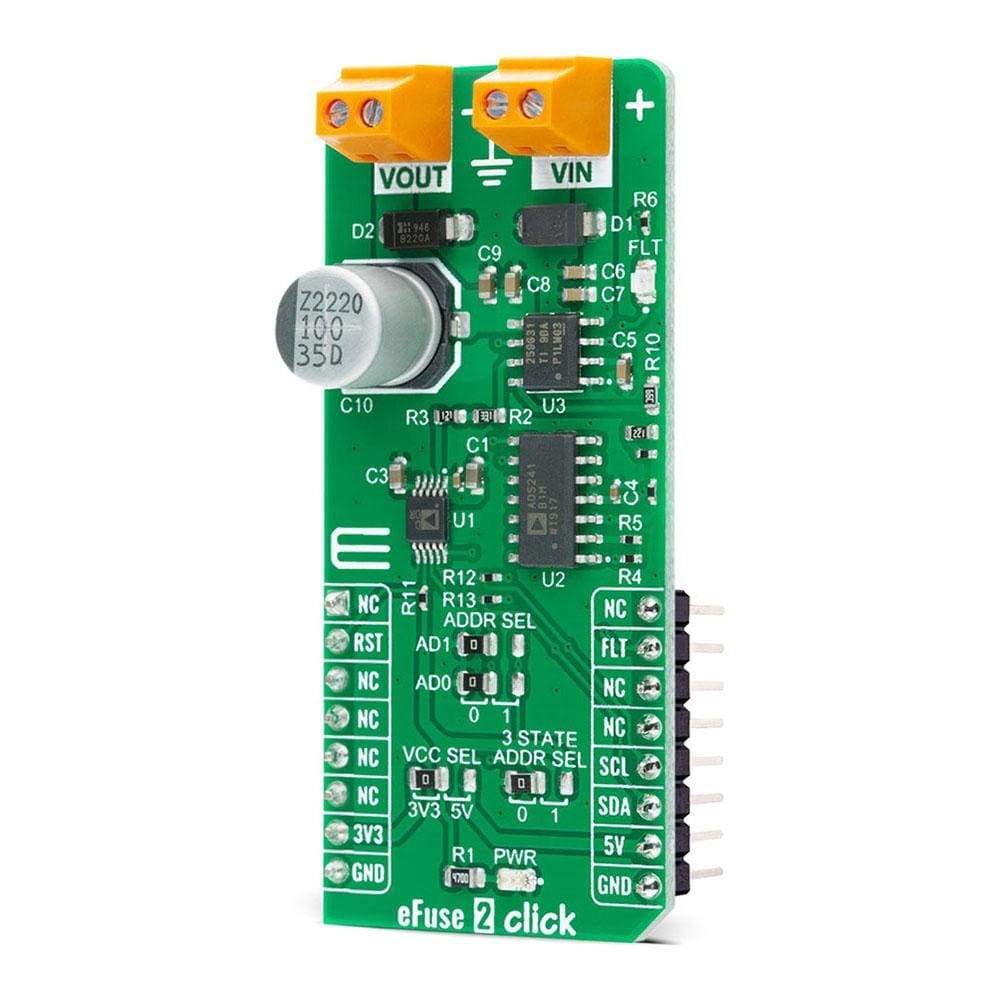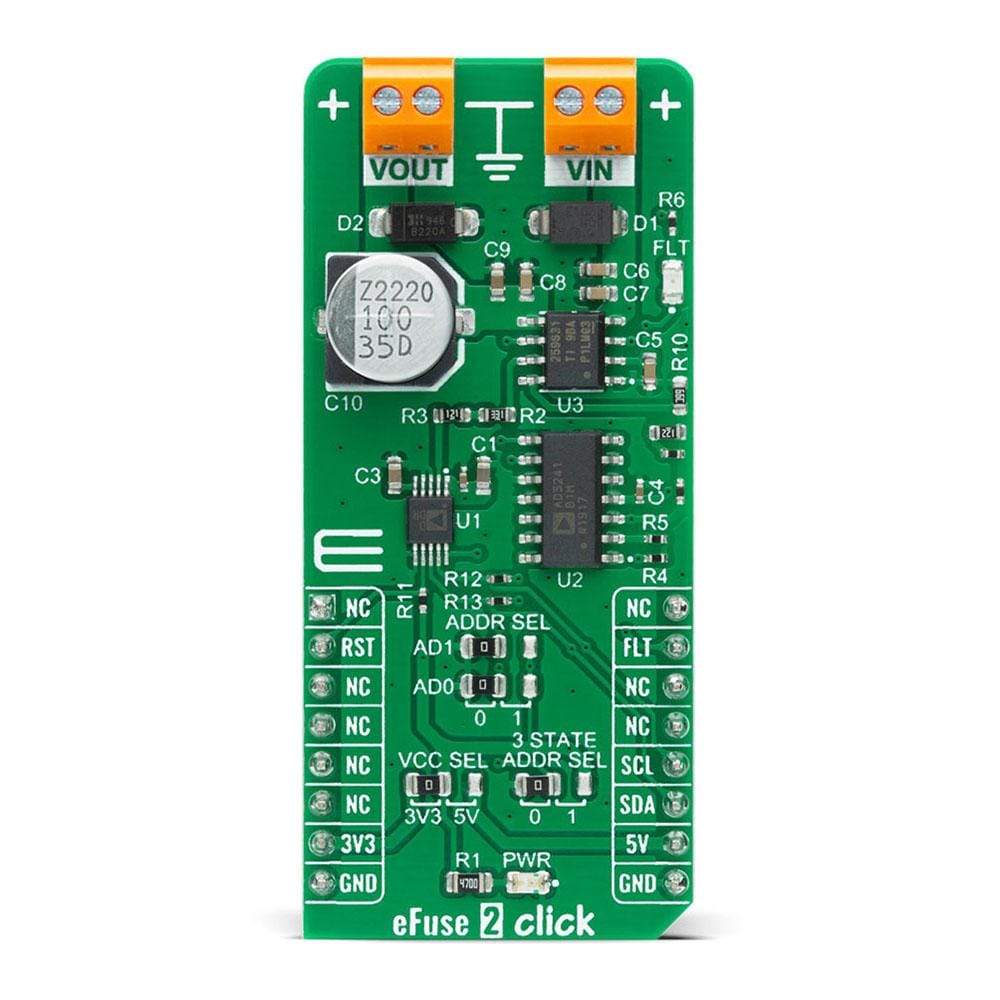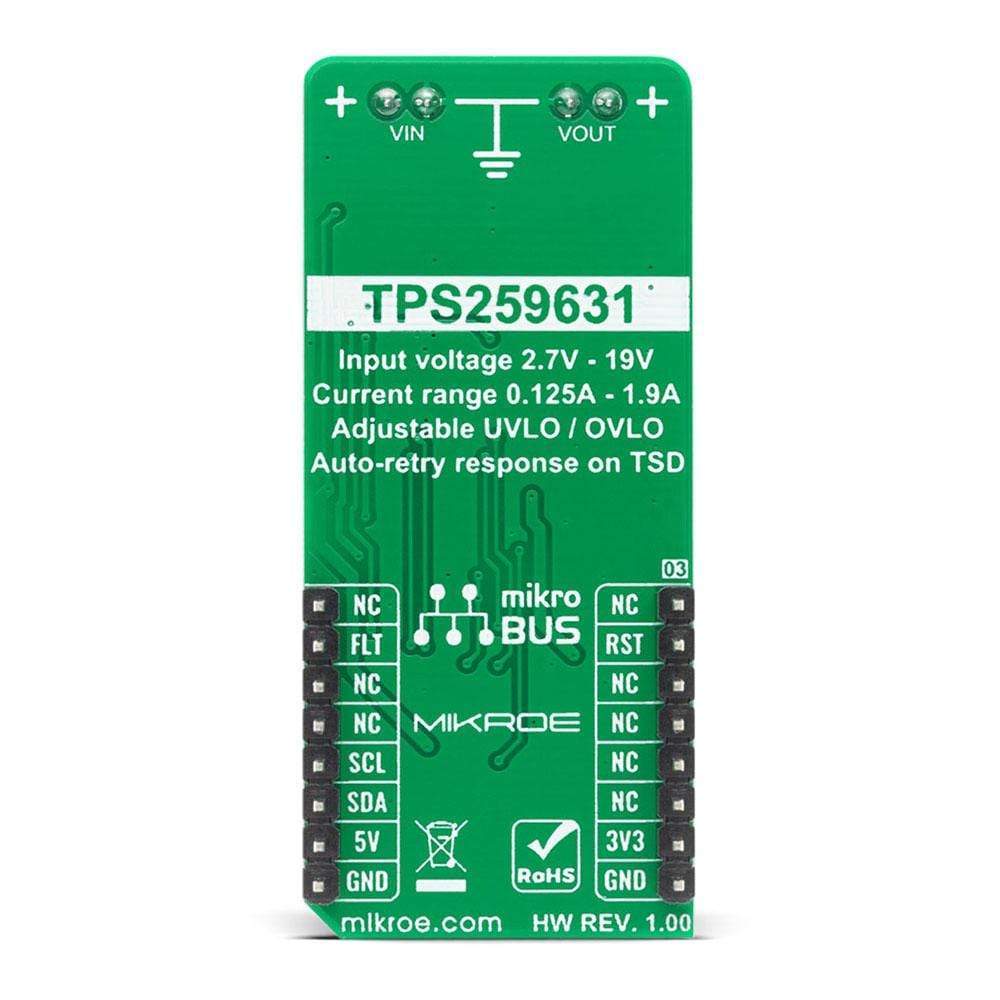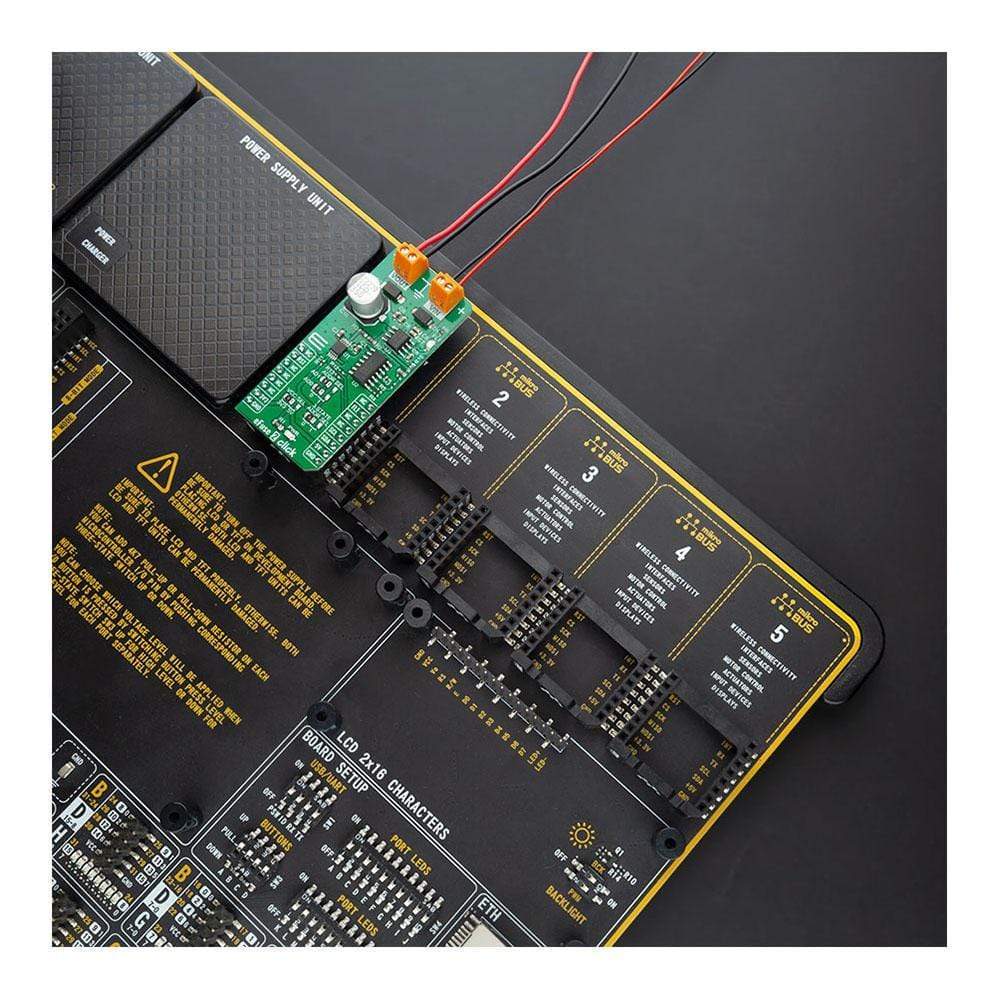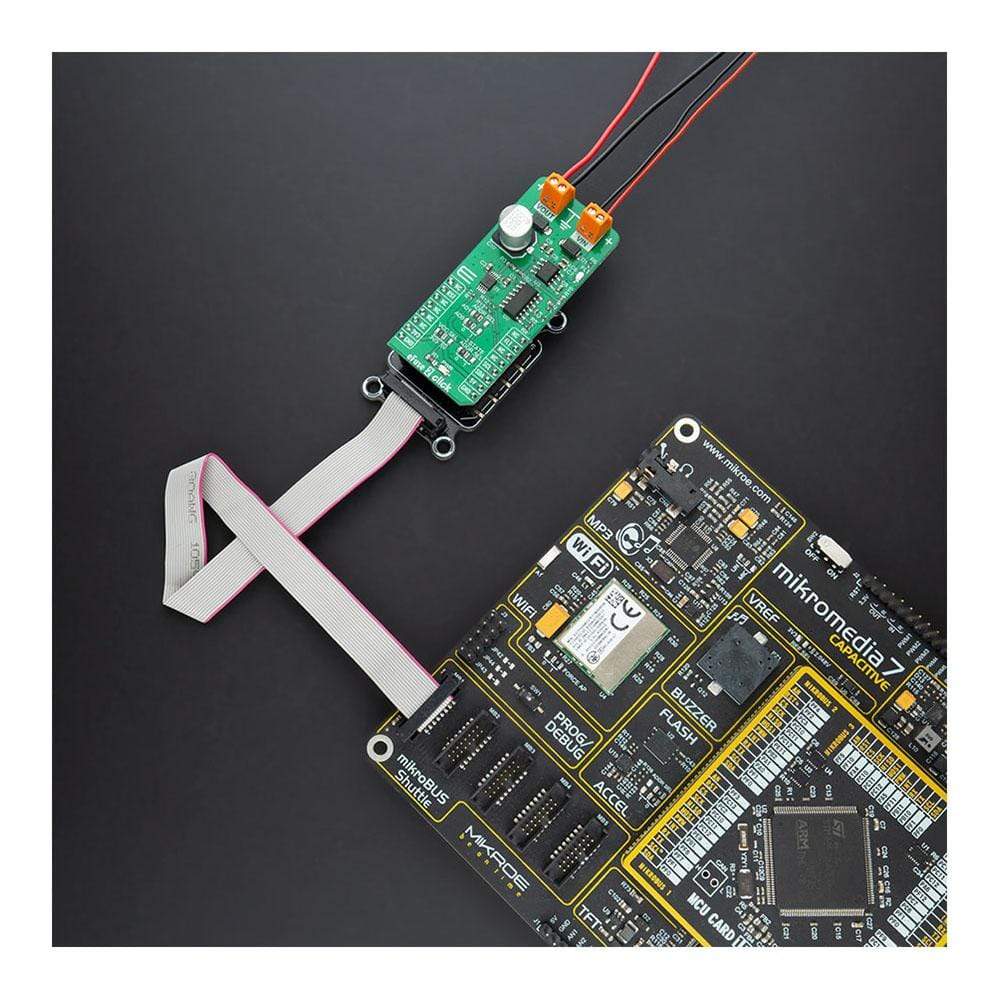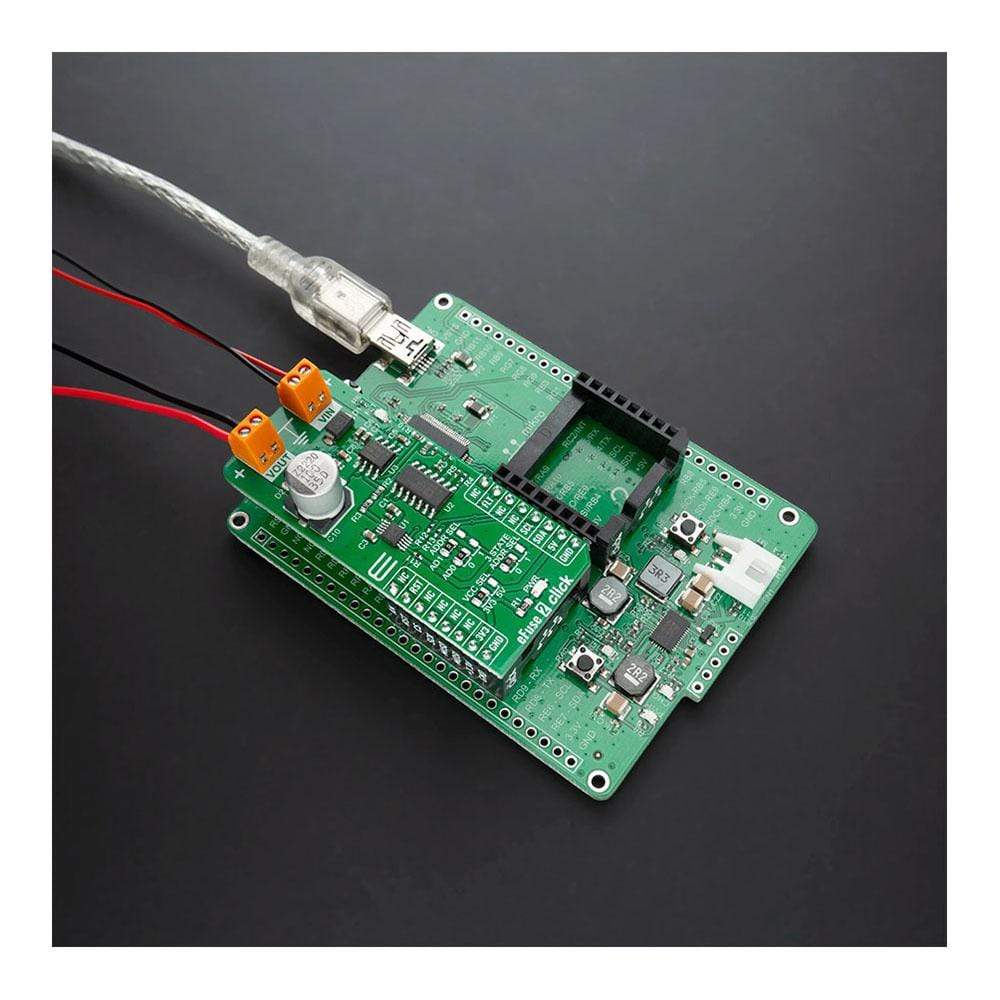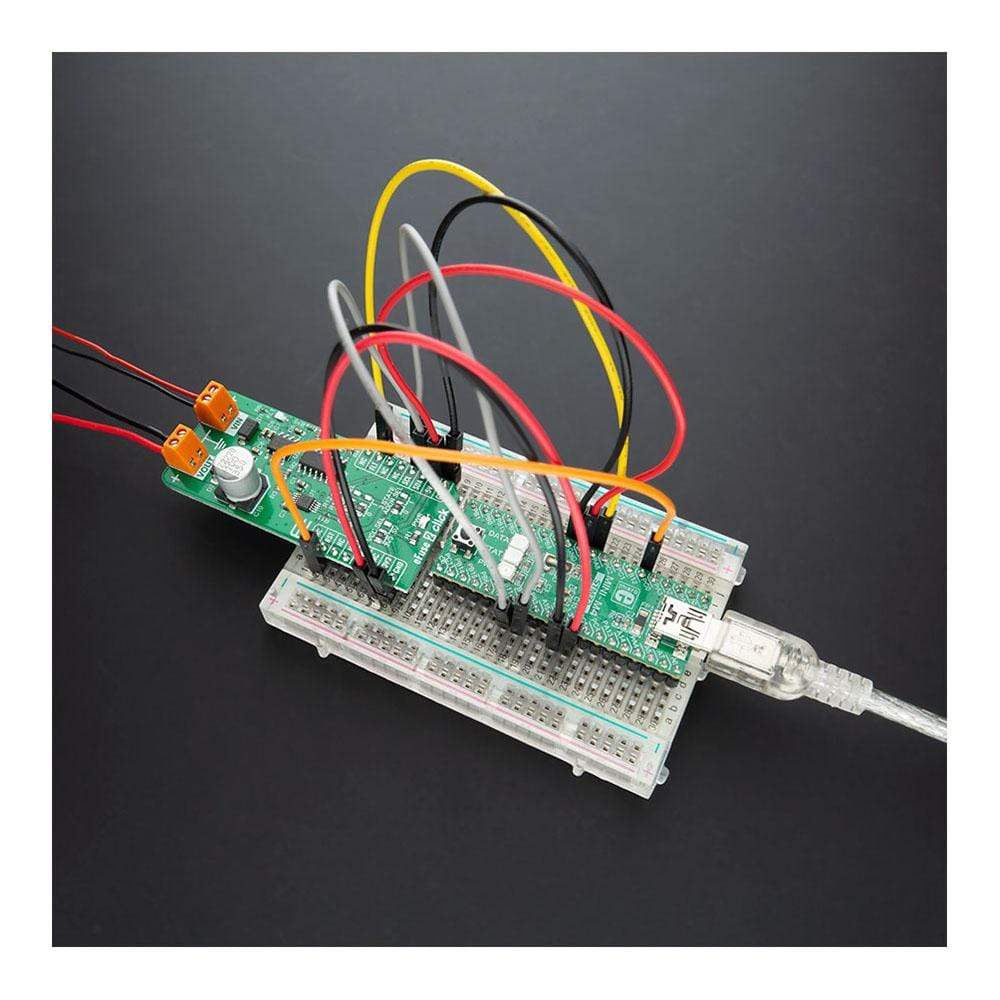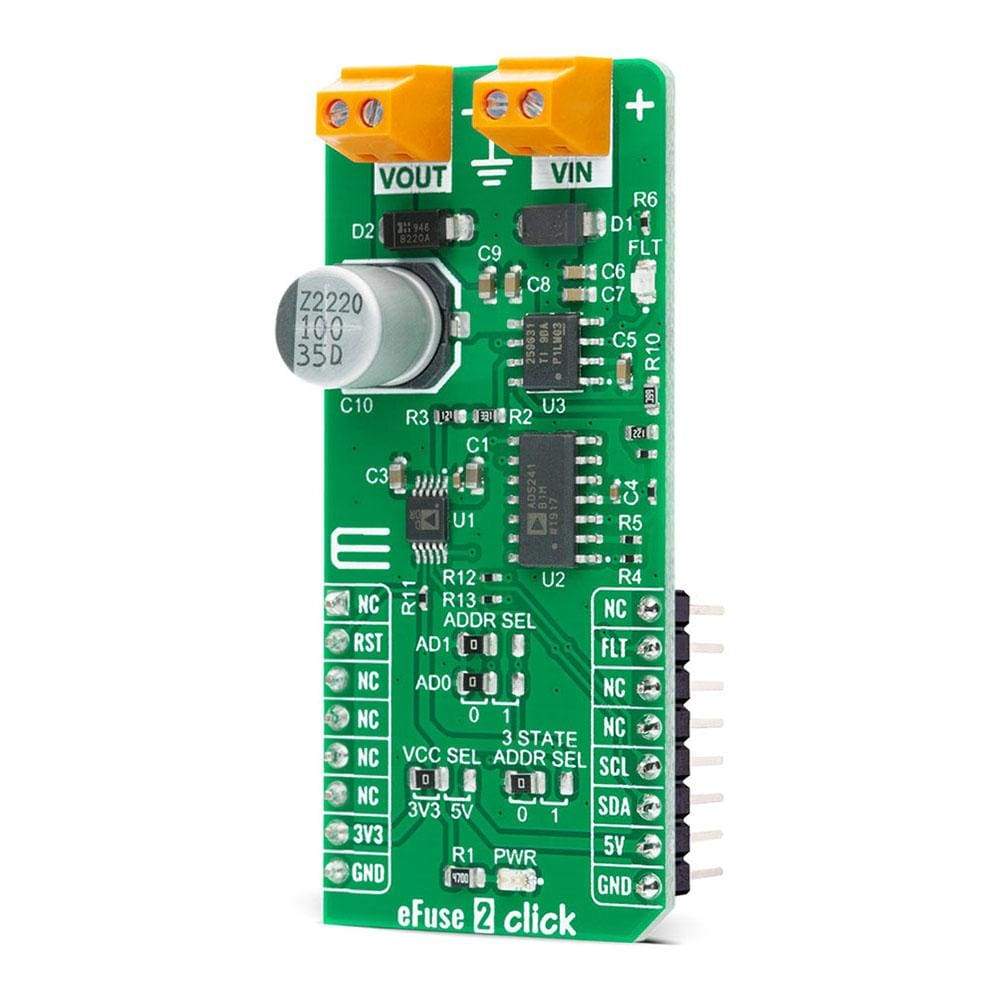
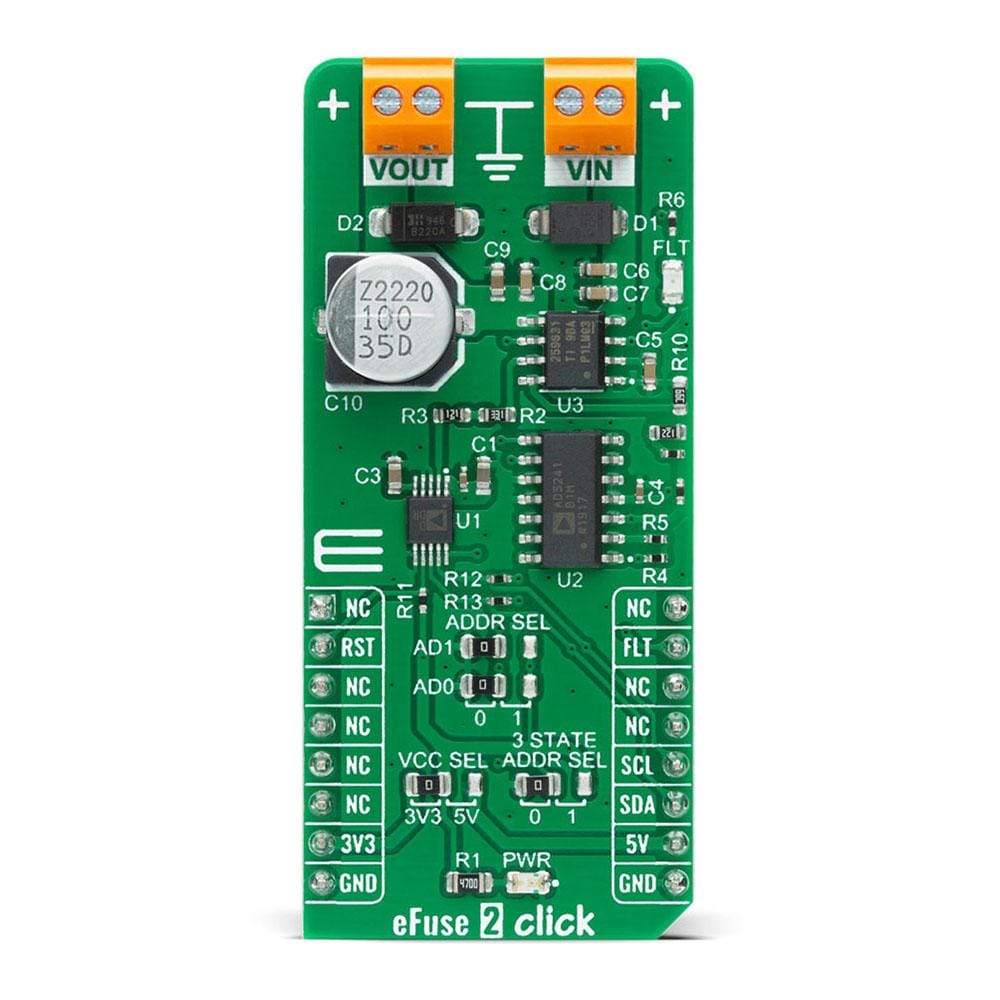
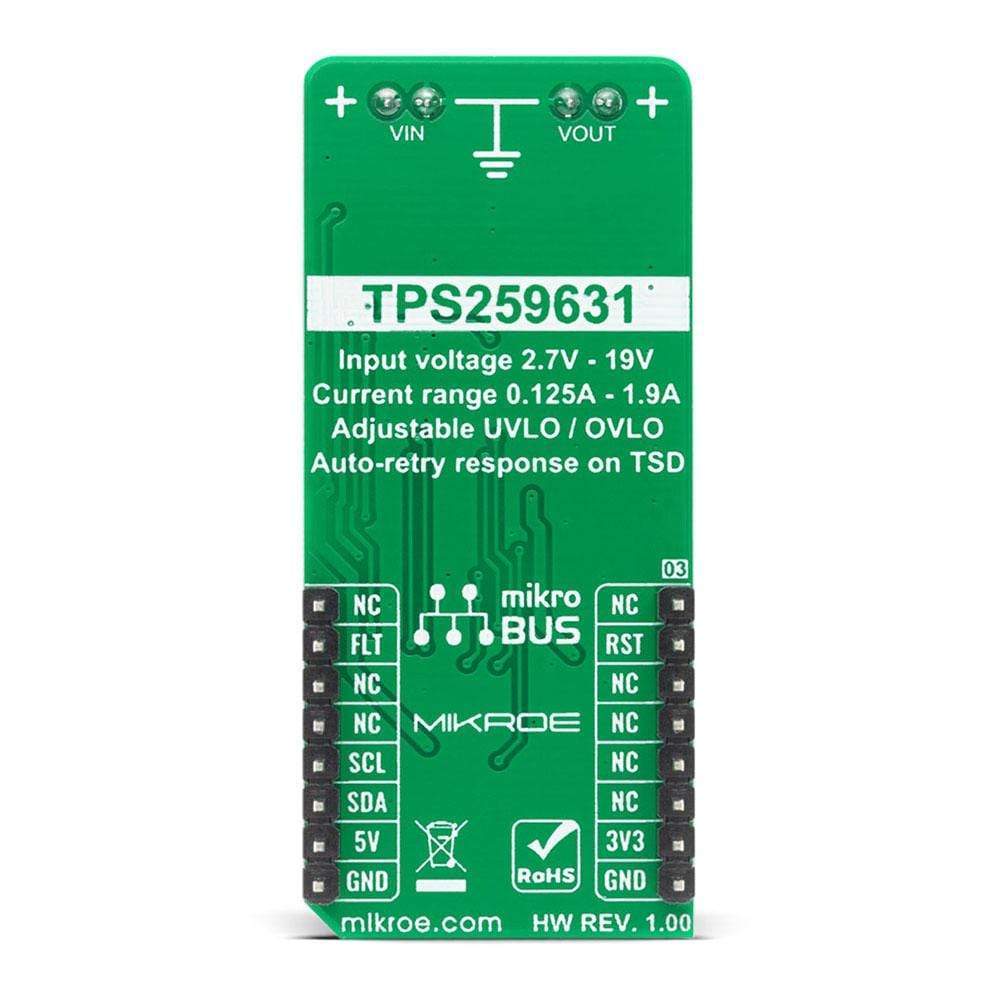
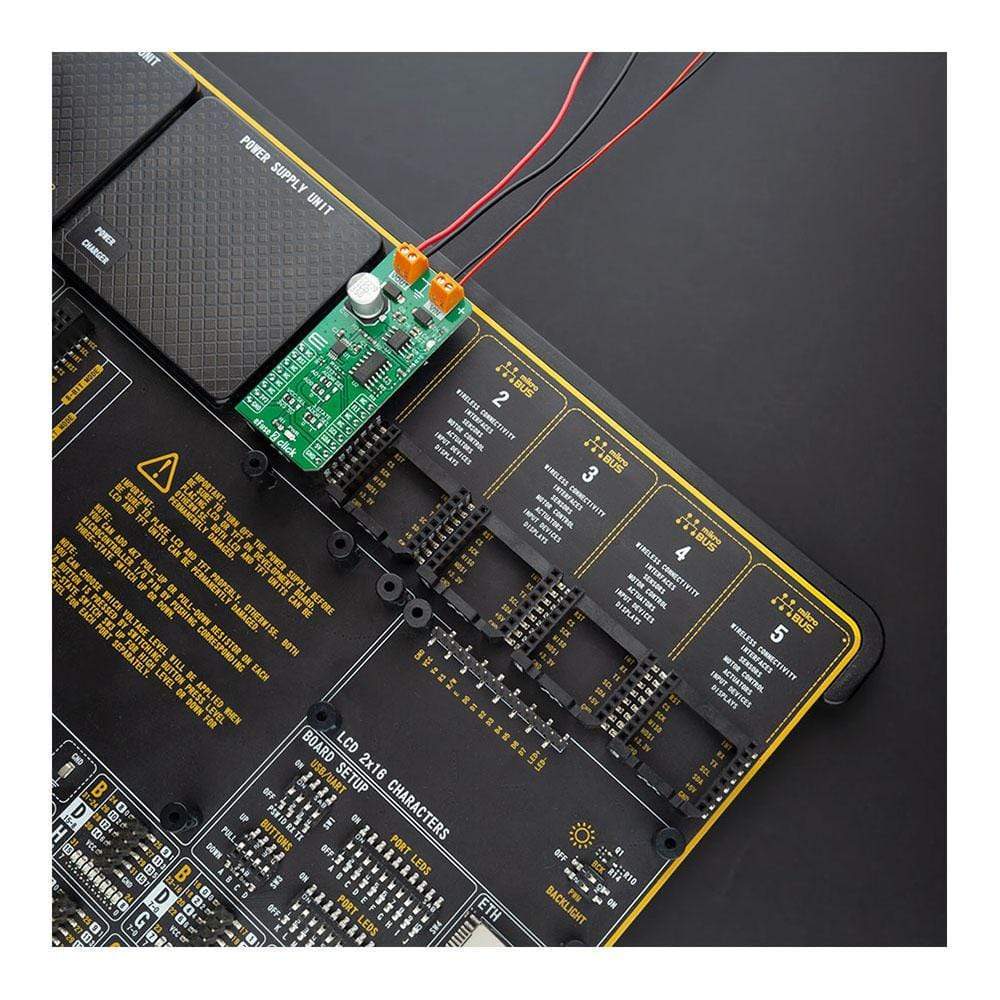
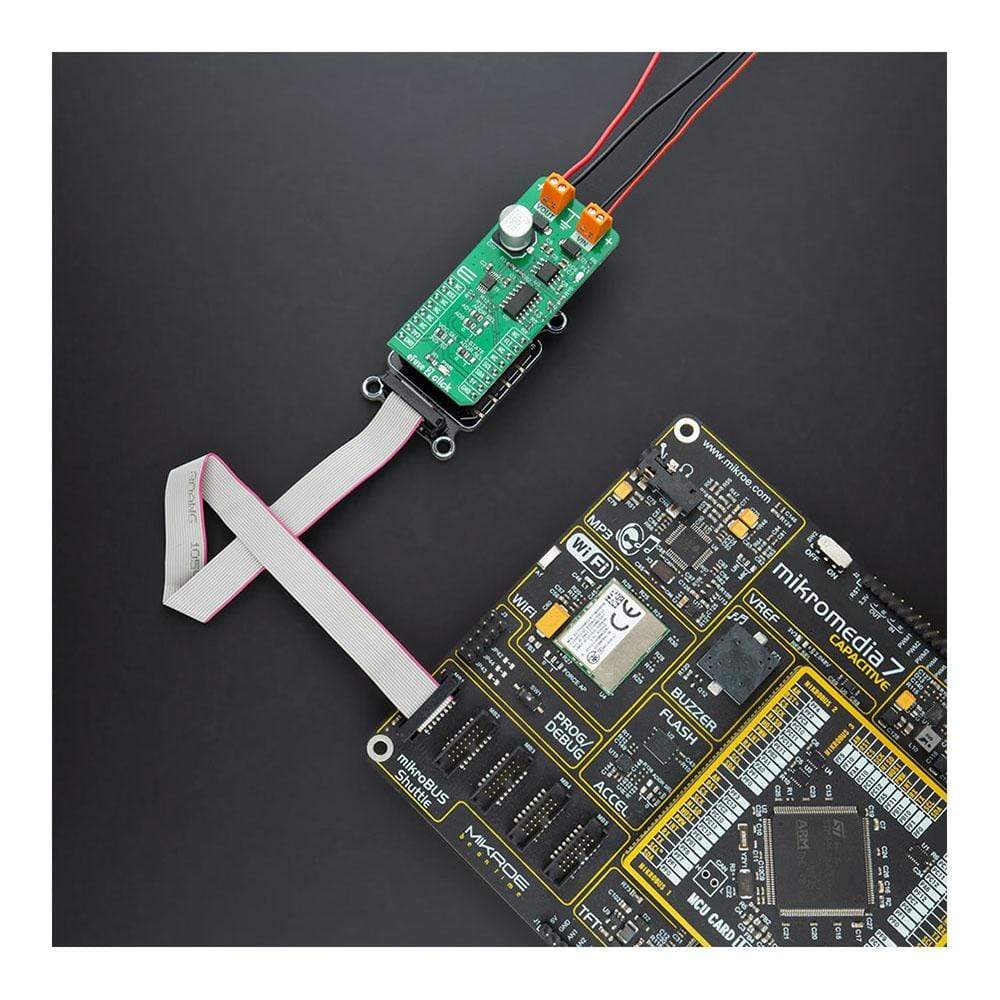
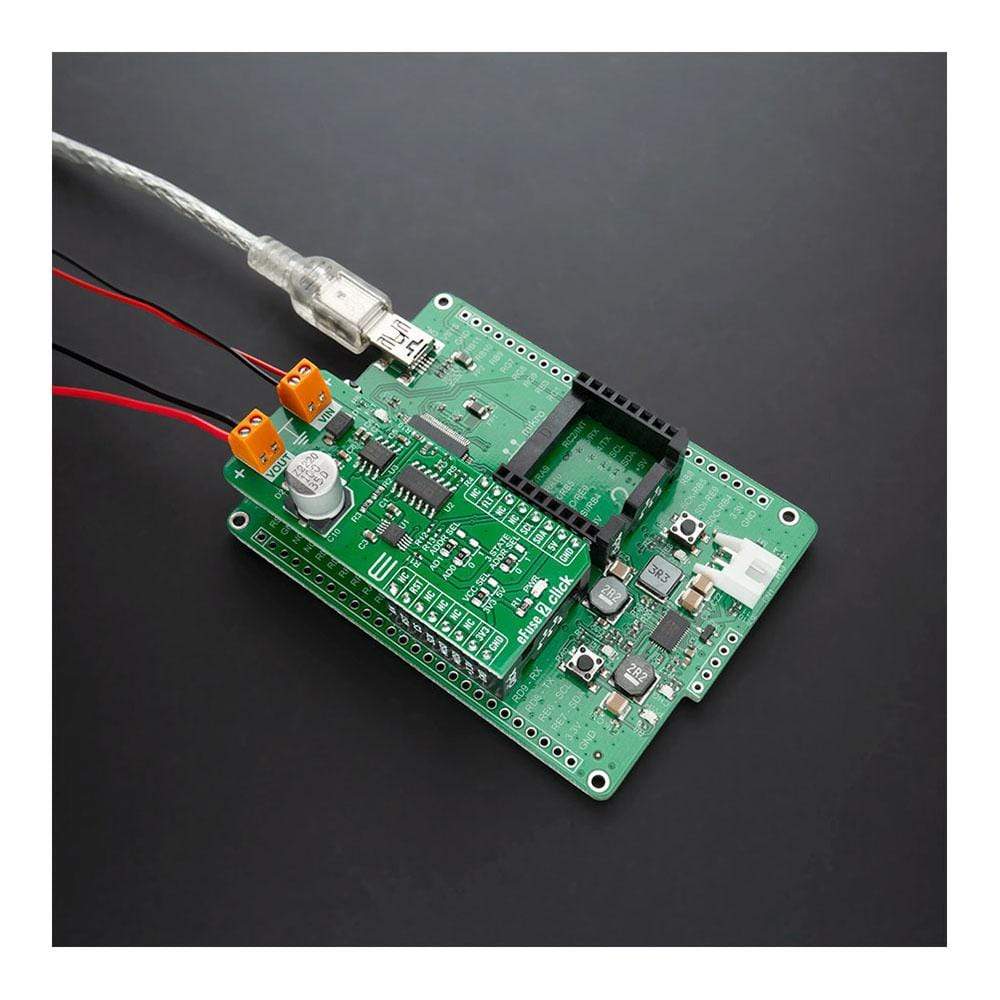
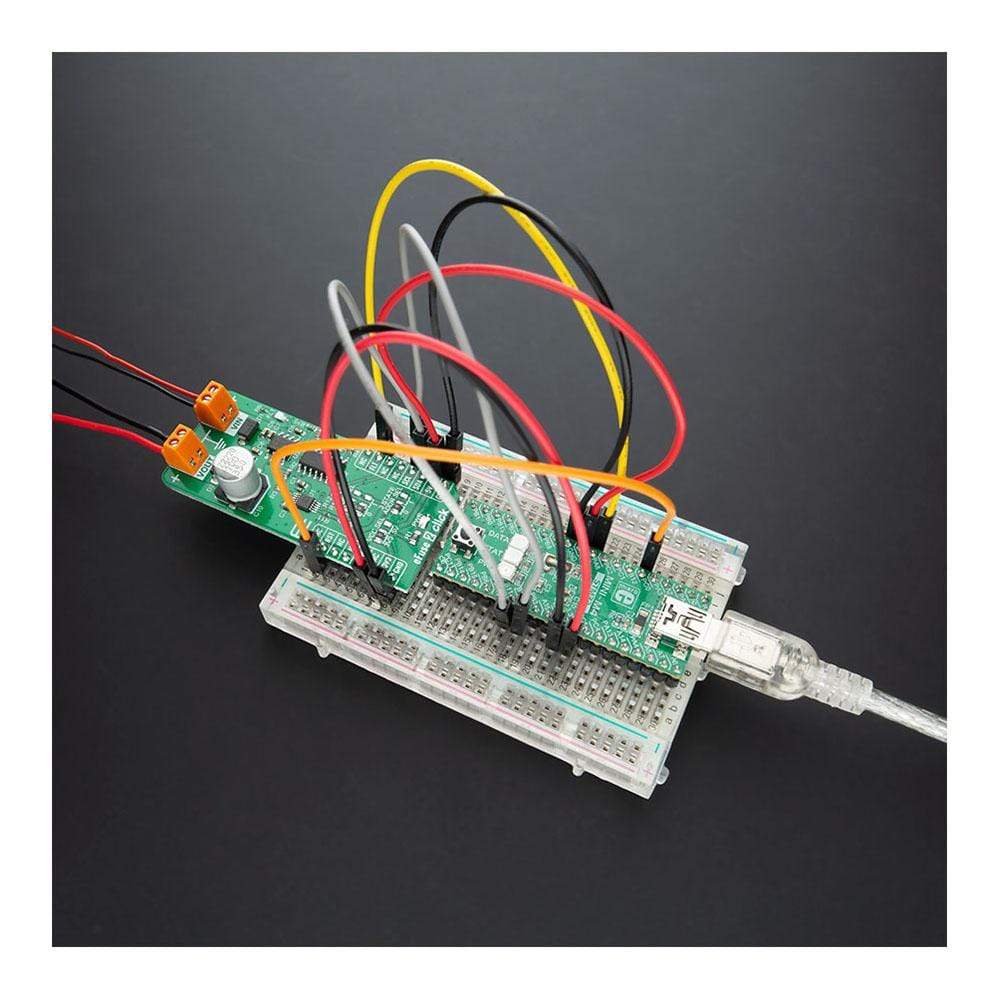
Overview
The eFuse 2 Click Board™ is a compact add-on board that contains an integrated FET hot-swap device. This board features the TPS259631, a highly integrated circuit protection and power management solution from Texas Instruments. It provides multiple protection modes against overloads, short circuits, voltage surges, and excessive inrush current. Also, it is possible to get an accurate sense of the output load current by measuring the voltage drop across digital rheostat that can set the output current limit level. The device also uses an in-built thermal shutdown mechanism to protect itself during these fault events. This Click Board™ is typically used for hot-swapping and power rail protection applications.
The eFuse 2 Click Board™ is supported by a mikroSDK compliant library, which includes functions that simplify software development. This Click Board™ comes as a fully tested product, ready to be used on a system equipped with the mikroBUS™ socket.
Downloads
Das eFuse 2 Click Board™ ist eine kompakte Zusatzplatine, die ein integriertes FET-Hot-Swap-Gerät enthält. Diese Platine verfügt über den TPS259631, eine hochintegrierte Schaltungsschutz- und Energieverwaltungslösung von Texas Instruments. Es bietet mehrere Schutzmodi gegen Überlastungen, Kurzschlüsse, Spannungsspitzen und übermäßigen Einschaltstrom. Außerdem ist es möglich, den Ausgangslaststrom genau zu erfassen, indem der Spannungsabfall über dem digitalen Rheostat gemessen wird, mit dem der Ausgangsstrombegrenzungspegel eingestellt werden kann. Das Gerät verwendet außerdem einen integrierten thermischen Abschaltmechanismus, um sich während dieser Fehlerereignisse zu schützen. Dieses Click Board™ wird typischerweise für Hot-Swap- und Stromschienenschutzanwendungen verwendet.
Das eFuse 2 Click Board™ wird von einer mikroSDK-kompatiblen Bibliothek unterstützt, die Funktionen enthält, die die Softwareentwicklung vereinfachen. Dieses Click Board™ wird als vollständig getestetes Produkt geliefert und ist bereit für den Einsatz auf einem System, das mit der mikroBUS™-Buchse ausgestattet ist.
| General Information | |
|---|---|
Part Number (SKU) |
MIKROE-4335
|
Manufacturer |
|
| Physical and Mechanical | |
Weight |
0.021 kg
|
| Other | |
Country of Origin |
|
HS Code Customs Tariff code
|
|
EAN |
8606027380969
|
Warranty |
|
Frequently Asked Questions
Have a Question?
Be the first to ask a question about this.

